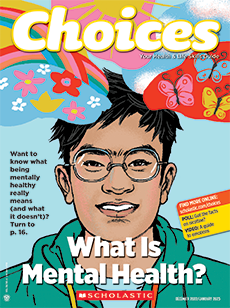Continue the learning journey with the following extension activity:
In PUT YOUR HEADS TOGETHER, have students work in groups to generate a list of questions they still have about concussions, such as “How long does it take to get back to normal after a concussion?” or “Which activities result in the most concussions for teens?” Tell groups to aim for 5-7 questions. Once the list is complete, they should use the internet to find answers to their questions. Encourage them to use reputable sources, such as those with .org or .edu at the end. Choose one volunteer from each group to share the most interesting things they learned.
